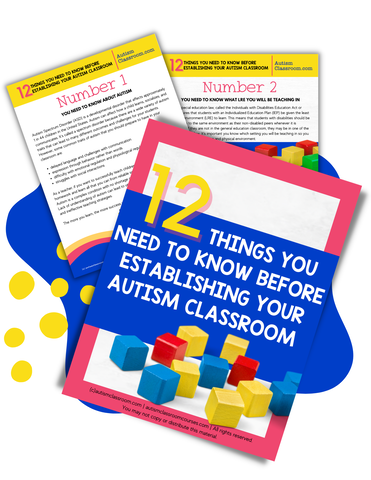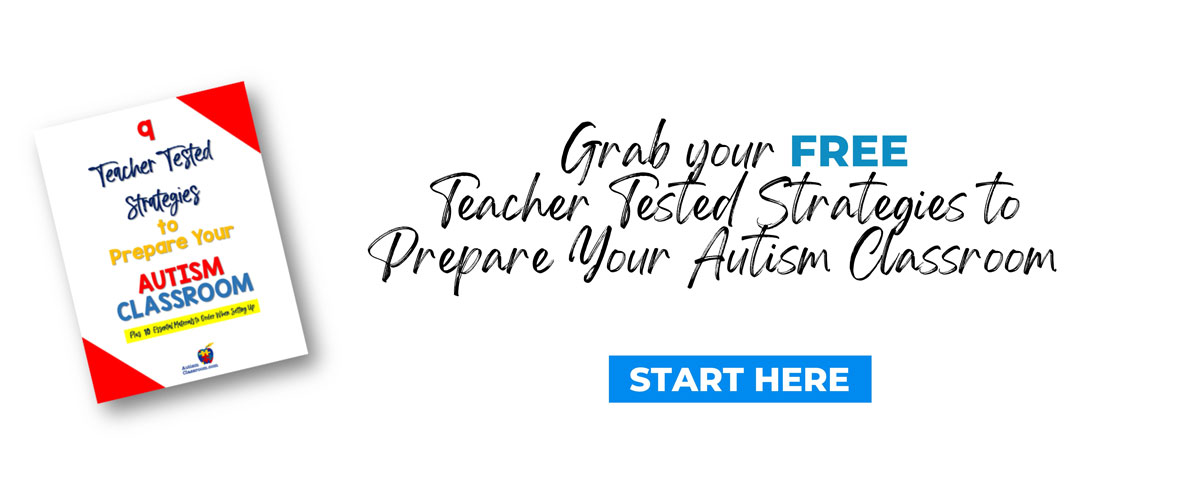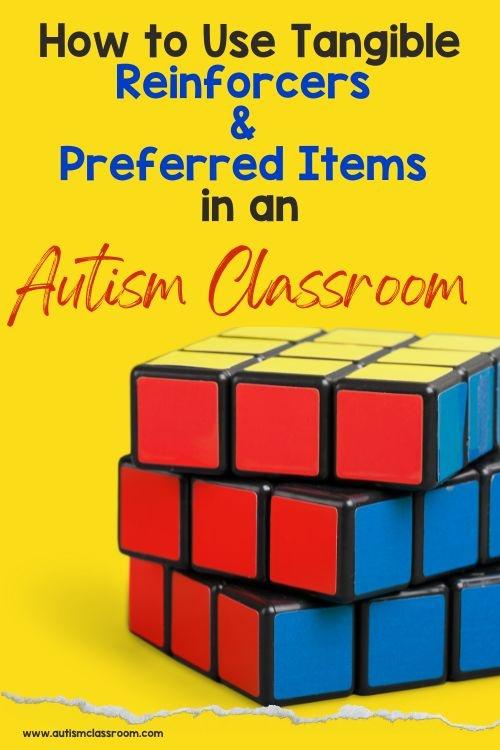
Using Reinforcement Boxes and Incentives to Motivate Students During Transition Times
Transitions can often be a challenge for students with autism. We as educators have many things to fit into a day and need our students to follow their schedules and move quickly and efficiently. So, what are we to do when we have a student severely struggling to move from one task to the next?
Objects are often a wonderful tool in the transition process. Giving the student a task or job to “help” them move to the next activity can help students become more efficient as time goes on. For example, carrying schedule cards, picture icons or lesson materials pre-packed are all reinforcements that help students transition easily.
Getting Started with Reinforcement Boxes
Let’s be clear, there is an official way to find out what are positive reinforcers? To find the meaning for reinforcers and please take a look here, if you need it. But for the sake of this blog post, I am defining reinforcers in this manner. Reinforcers or preferred items are things that students like and will work on in order to motivate them to complete a task, or move to a task quickly. Specifically, tangible reinforcers can help motivate students with autism to complete tasks, because the student knows they will be able to do something they like to do.
I love the idea of reinforcement boxes. These boxes could be tangible reinforcers that are organized in a variety of ways such as, a labeled transition box, or even backpack filled with the student’s preferred objects. When working with students with autism reinforcers are the way to go. I often recommend food storage containers to store these preferred items for each student. These are easy to find at many stores and reasonably priced around $2.50 - $3.00. When students can see inside the box, they tend to be more motivated to get to the box.
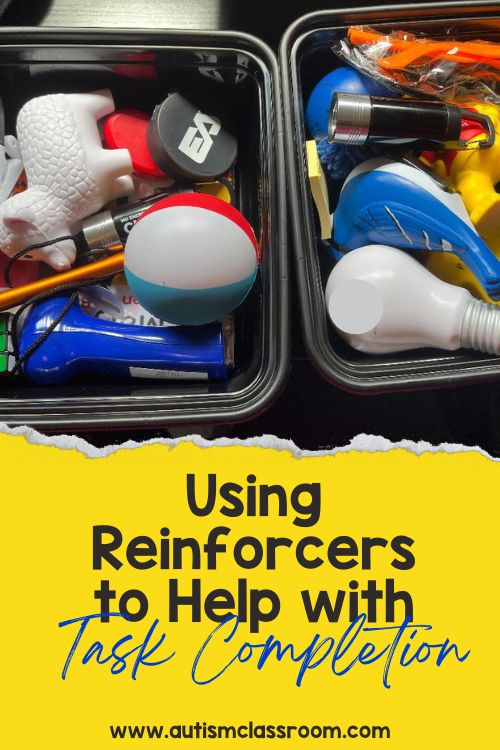
So What Do You Do?
You use the boxes or bins to get students to transition more easily. Once the student has successfully transitioned, the student will get time to play with the objects in the box. Only allow play with the items at the designated area where the students are transitioning.
It’s okay to establish routines using the box, especially when getting started. These tips and strategies should give you the tools to implement transition boxes or reinforcer boxes in your classroom in no time!
- Think about what are positive reinforcers for you students.
- Be sure that the boxes are visible when directing students to an un-preferred task to incentivize them to transition smoothly.
- Only after the routine has been put into place, you may slowly begin fading the tangible reinforcers away.
- For example, at first, allow them to hold it during the lesson or use it throughout the lesson.
- Then, have them place it down on the desk when they need to answer one question or complete a quick task.
- Next, have them place it down during the lesson.
- Then eventually, give the student access to the item for 2 minutes after the lesson.
What Goes Inside The Reinforcement Boxes?
Some examples of objects these boxes could contain are:
- small durable toys from old fast food restaurant prizes
- stringy toys
- small playdough containers
- coil toys
- fidgets
- any other easy to clean up tangible reinforcers
You could use Donors Choose or an Amazon wishlists in order to fund your classroom reinforcement boxes. Just be sure to get safe toys that do not have small pieces. Asking parents or other teachers to donate unused toys or prizes can also be beneficial in getting the materials needed for reinforcement boxes. Just tell them you are working with students with autism reinforcers are needed and they will be a true gift to your classroom.
Individual Reinforcers
Again I recommend using food storage containers (64 oz.) as reinforcer boxes for each student. They have lids and are perfect for holding about 5-6 preferred items. Label each bin for a specific student. Sometimes these bins can be found at a dollar store, but at the grocery store sometimes they come in packs of 2 for about 3.00 dollars. For the individual bins, gather small durable toys from old fast food restaurant prizes, cards, toy figurines, sensory toys, squishy stress balls or fidgets. Honestly, just about anything can be placed in here. In the past, I have placed baseball cards, note paper, fun-styled pencils, plastic sun glasses, patterned paper, swatches of fabric, you name it. The students will find something they like. Bonus if you know a character they like!!! Once you know what are positive reinforcers for each student, you can get stickers or toys or notepads with that character. You should make sure that the toys are appropriate for your student population. Think about certain toys being choking hazards for some students—do no add those toys.
This is a time to individually incentivize students to help them become successful at a transition they are struggling with. These boxes could help individuals to become better acquainted with transitioning quickly to the work area. Use the individual boxes for 1:1 work as well. Have students complete a task, then get access to the reinforcer box.
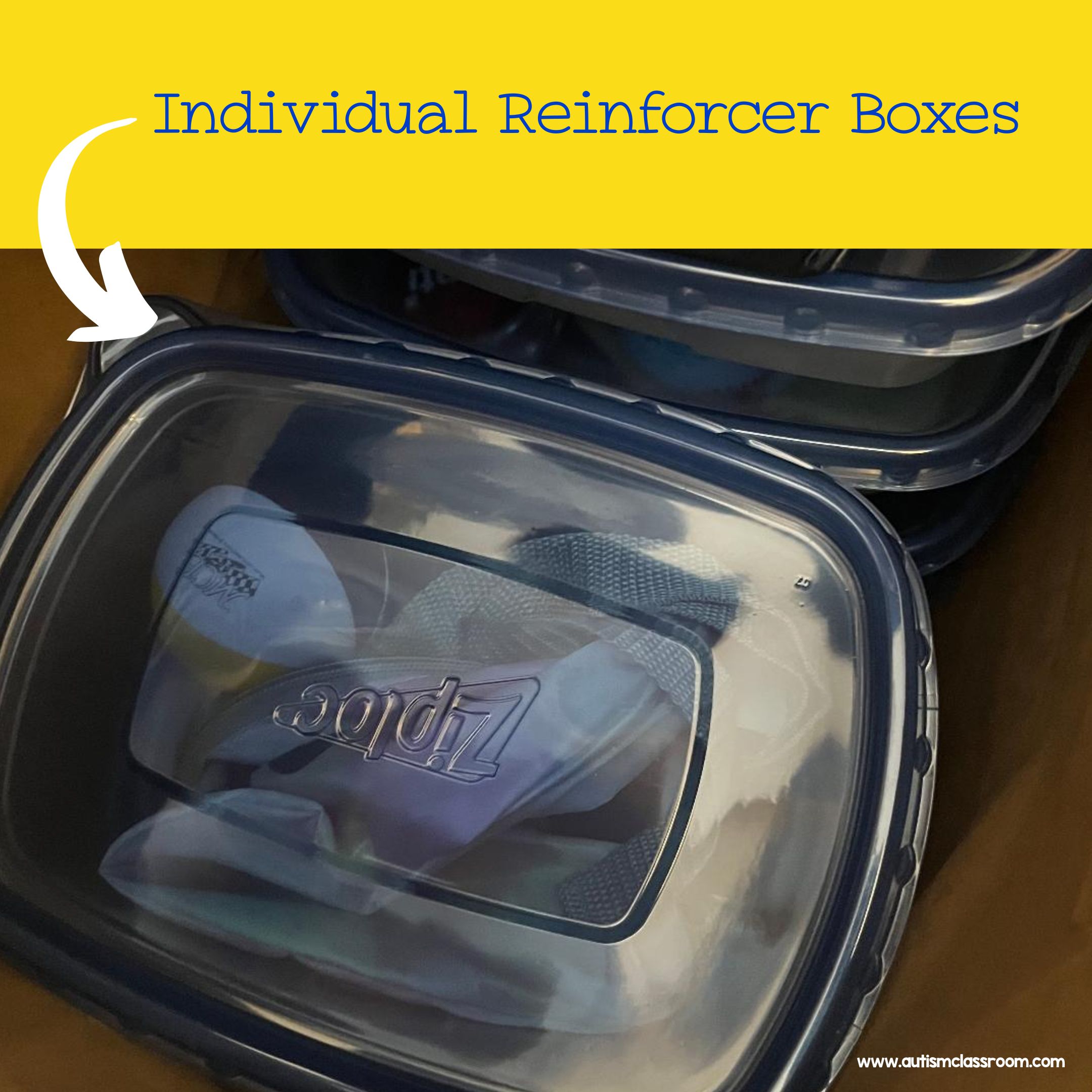
Small Group Reinforcers
Help incentivize success with academics or transitions to small groups by allowing all group members a chance to use a small group reinforcer activity box. There are no specific autism reinforcers since each student is unique and has their own preferences. However, some popular items are play dough, small durable toys from old fast food restaurant prizes, cards, toy figurines, sensory toys, squishy stress balls or fidgets. Anything that is quick and easy to clean up. This is not the time for art projects, tablets, computers or anything else that take time to set up and break down. These will be shared with several students so you will need to have about 10-12 items in these small group boxes.
Keep these separate from your individualized reinforcer boxes. Label the box either with the small group name or just label it generically “small group reinforcers.”
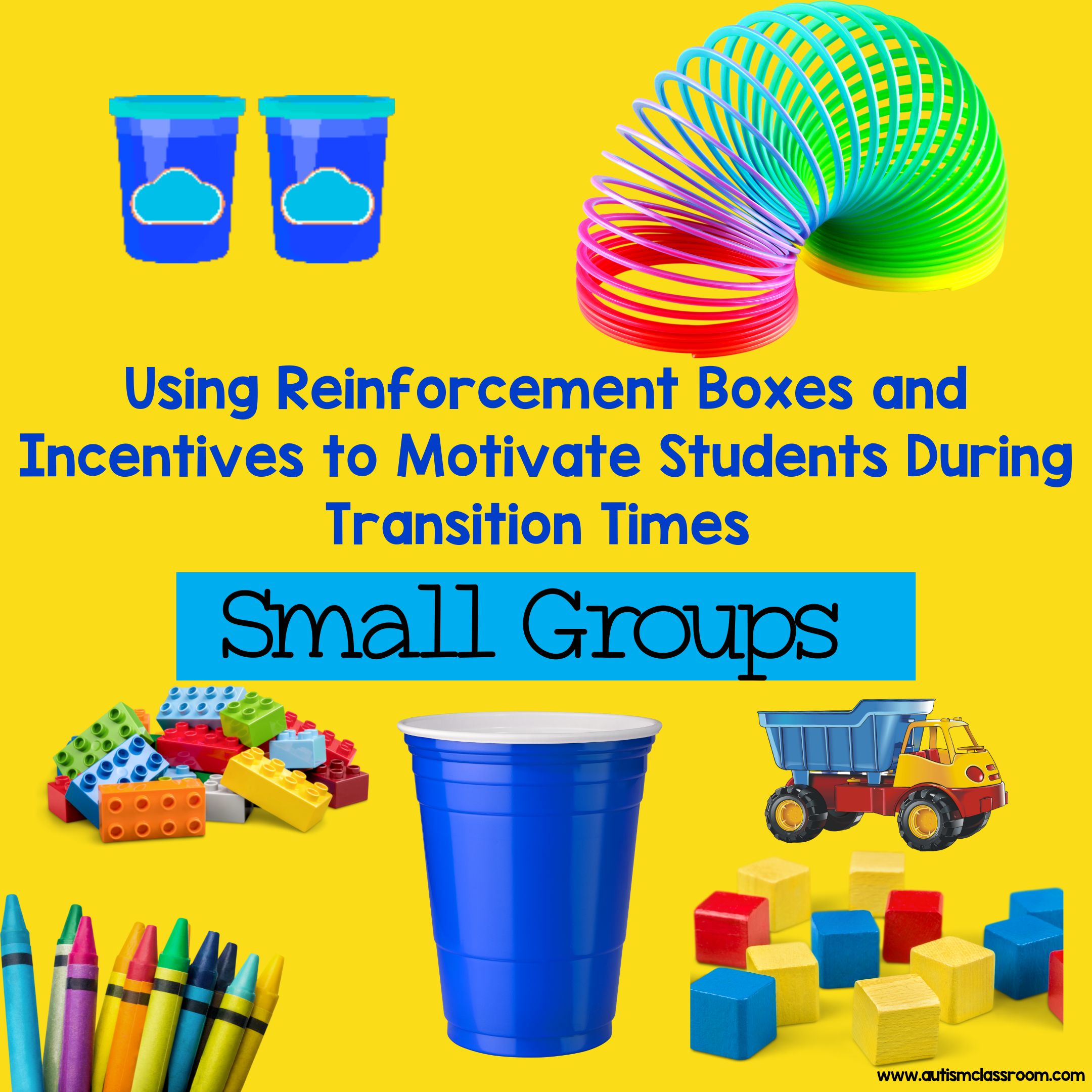
Whole Group Reinforcers
Make another larger bin for your group table activities and only let the students use it at the table or group lesson. These would be for the whole class to use to try to motivate them to gather at the table or large group lesson. Some teachers use tangible reinforcers and some use edible reinforcers. If you use edible reinforcers, make sure you break them into small pieces so that they are quick and easy to consume. This gives you more chances to have the student complete several trials of a skill. Whatever you choose, make sure the bin is prepped with easy to clean up items.
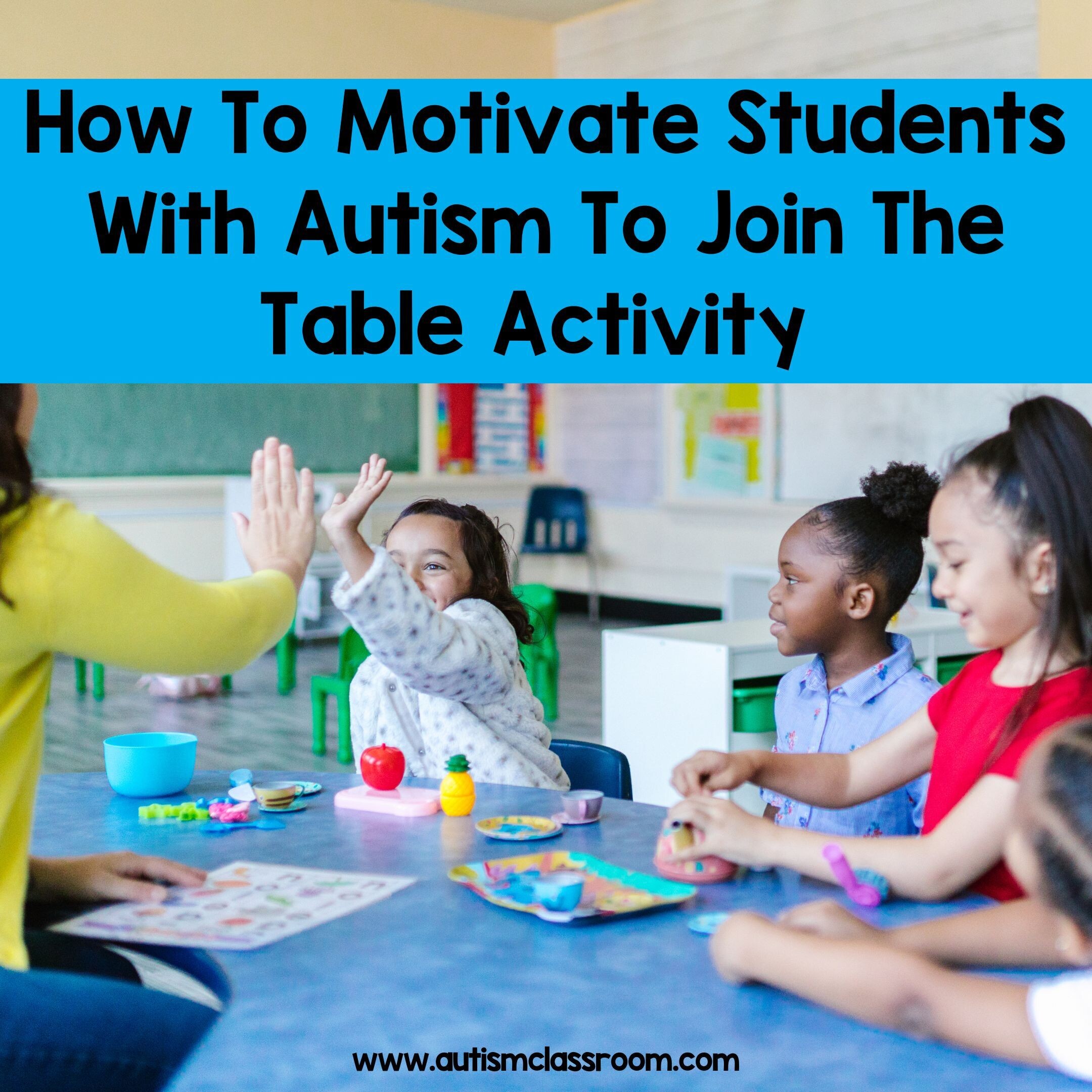
Be sure to make a plan for fading out the reinforcer box. Consider this:
- at first use it to get the students to the table
- then, let them use it while at the table – only if they are seated - Take the item back if they are not seated
- next, start to only give it for the first 10 minutes
- following that, the first 5 minutes
- then the first 1 minute
- after that routine has been established, consider using the box for the first 1 minute and last 1 minute of each group lesson for the remainder of the year
A Final Word About Using Reinforcers
The purpose for using reinforcer boxes is to help students become more successful at transition times or to help them complete a work assignment. These reinforcement boxes can be a game changer for successful behavior for some students. Hopefully, you find success with the boxes in your class!

